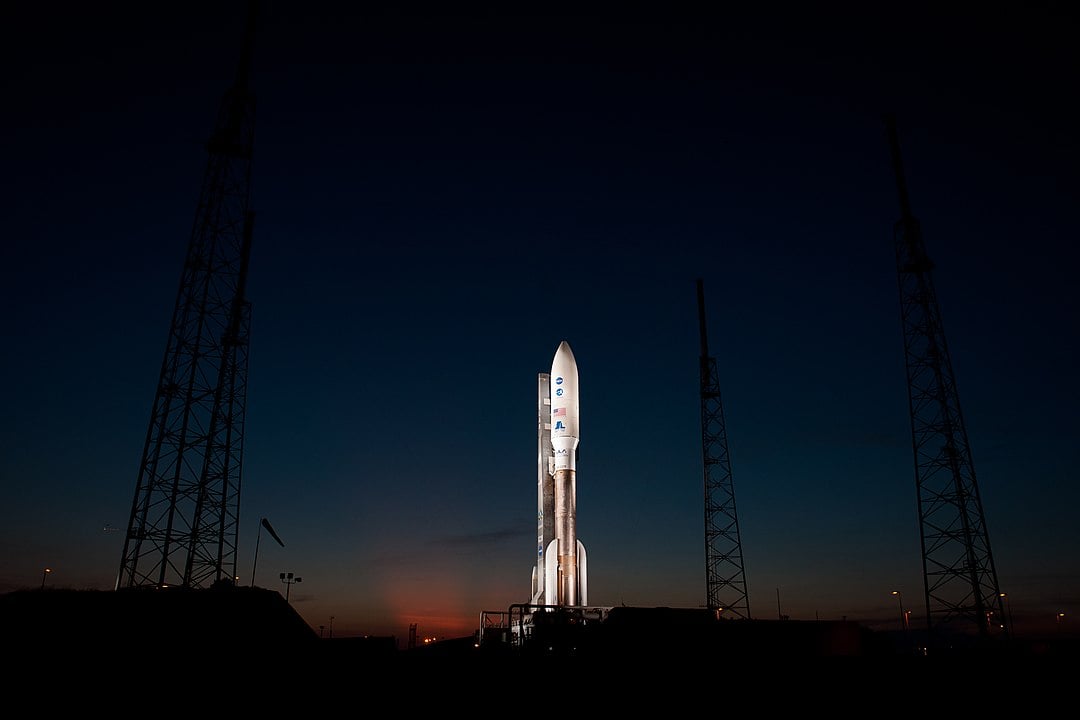Jupiter holds secrets at its heart that continue to puzzle scientists. The largest planet in our Solar System has what researchers call a “dilute core,” a central region that doesn’t have sharp boundaries like once expected. Instead of a distinct rocky centre surrounded by layers of gas, Jupiter’s core gradually blends into the hydrogen-rich layers above it, creating a smooth transition zone.
This unusual structure was first discovered by NASA’s Juno spacecraft, which has been orbiting Jupiter since 2016. The finding surprised astronomers, who had assumed giant planets would have more clearly defined cores. The mystery deepened when observations revealed that Saturn appears to have a similar dilute core structure.
 Juno awaiting its launch in 2011 (Credit : Bill Ingalls)
Juno awaiting its launch in 2011 (Credit : Bill Ingalls)
One popular explanation for Jupiter’s fuzzy core involved a catastrophic collision early in the planet’s history. Scientists theorised that a massive object, perhaps containing half of Jupiter’s core material, crashed into the young planet with such force that it thoroughly mixed the central region. This collision would have been so violent that it scrambled the dense rock and ice at Jupiter’s centre with the lighter hydrogen and helium surrounding it.
A team of researchers at Durham University decided to put this giant impact theory to the test using powerful computer simulations. Working with scientists from NASA, SETI, and the University of Oslo, they used the DiRAC COSMA supercomputer to model what would happen when massive objects collide with Jupiter sized planets. The team ran multiple simulations using cutting edge software, testing various impact scenarios including extremely violent collisions. They employed new methods to better simulate how materials would mix during such catastrophic events.
 A picture of The Ogden Centre for Fundamental Physics Building, at Durham University (Credit : Padgriffin)
A picture of The Ogden Centre for Fundamental Physics Building, at Durham University (Credit : Padgriffin)
The results were clear and unexpected; none of the simulations produced a stable dilute core like the one Jupiter actually has. Instead, the computer models showed that after a giant impact, the dense rocky material would quickly settle back down, creating a sharp boundary between the core and the outer hydrogen layers, exactly the opposite of what Juno observed.
“We see in our simulations that this kind of impact literally shakes the planet to its core, just not in the right way to explain the interior of Jupiter that we see today.” – Dr. Thomas Sandnes from Durham University.
The study, published in Monthly Notices of the Royal Astronomical Society, suggests that Jupiter’s dilute core formed through a much more gradual process. Rather than being created by a single dramatic collision, the unusual structure likely developed as the growing planet slowly absorbed both heavy and light materials during its formation billions of years ago. This gradual formation theory gains support from the fact that Saturn also has a dilute core. Dr. Luis Teodoro from the University of Oslo pointed out that Saturn’s similar structure strengthens the idea that dilute cores are not the result of rare, extremely high energy impacts but instead form gradually during the long process of planetary growth and evolution.
These findings have implications beyond our Solar System. Astronomers have discovered many Jupiter and Saturn sized planets orbiting other stars. If dilute cores form gradually rather than through rare catastrophic events, it suggests that most of these distant worlds might have similarly complex internal structures. The research demonstrates that while giant impacts certainly played important roles in planetary formation, they cannot explain every feature we observe. As scientists continue to study our stellar neighbourhood and the thousands of planets beyond, mysteries like Jupiter’s core remind us that the universe still holds many surprises.
Source : New study counters idea that Jupiter’s mysterious core was formed by a giant impact
Source link

